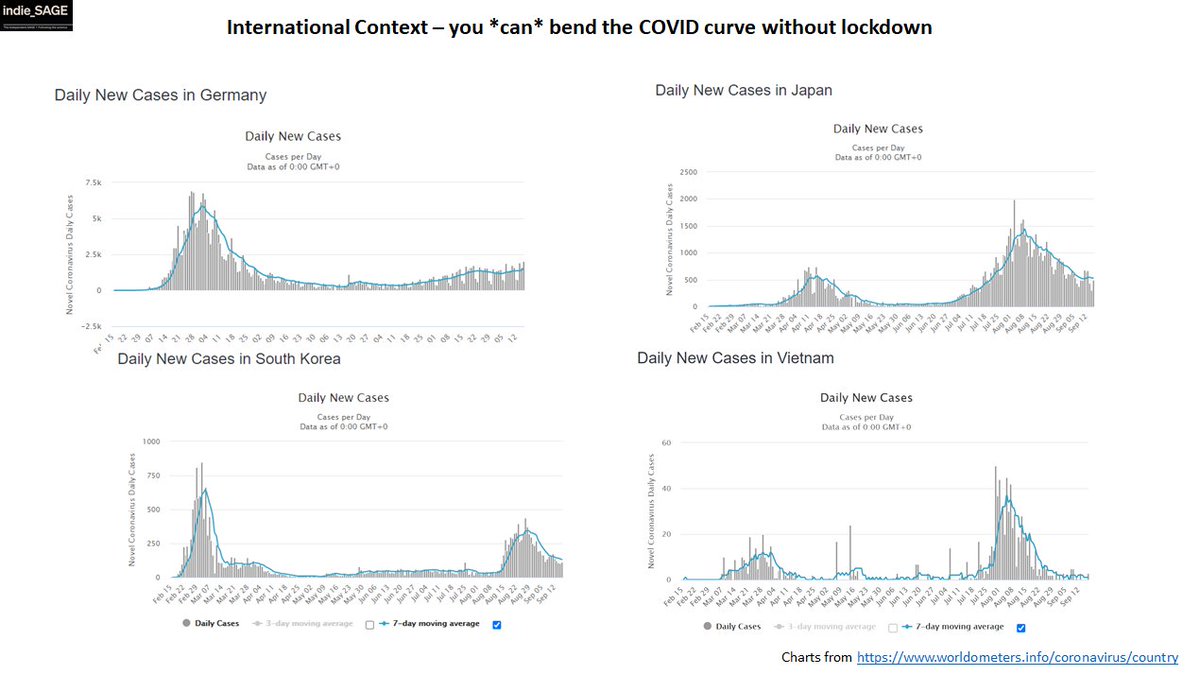THREAD: where we are with COVID in the UK and what we should do about it. TLDR: it's not good, but there's hope. We have maybe 2/3 weeks to get cases down. 1/13
Firstly, testing & tracing is in crisis as has been well documented for the last two weeks. Only 9% of tests in England are now returned promptly. 2/13 

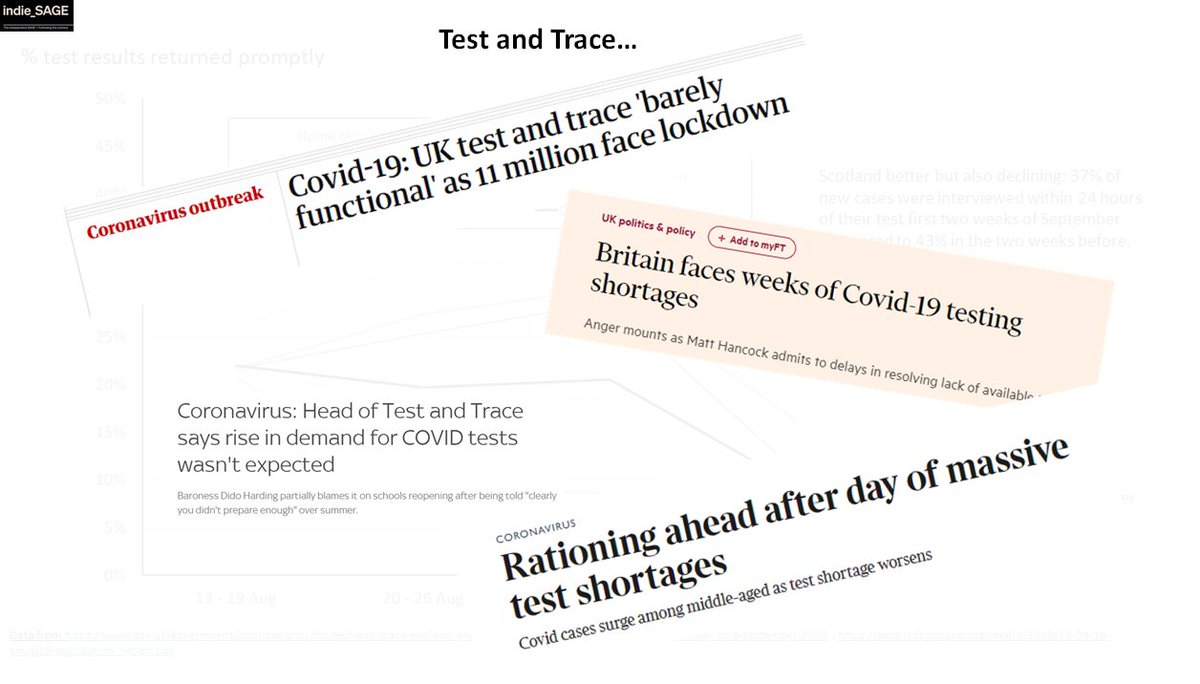
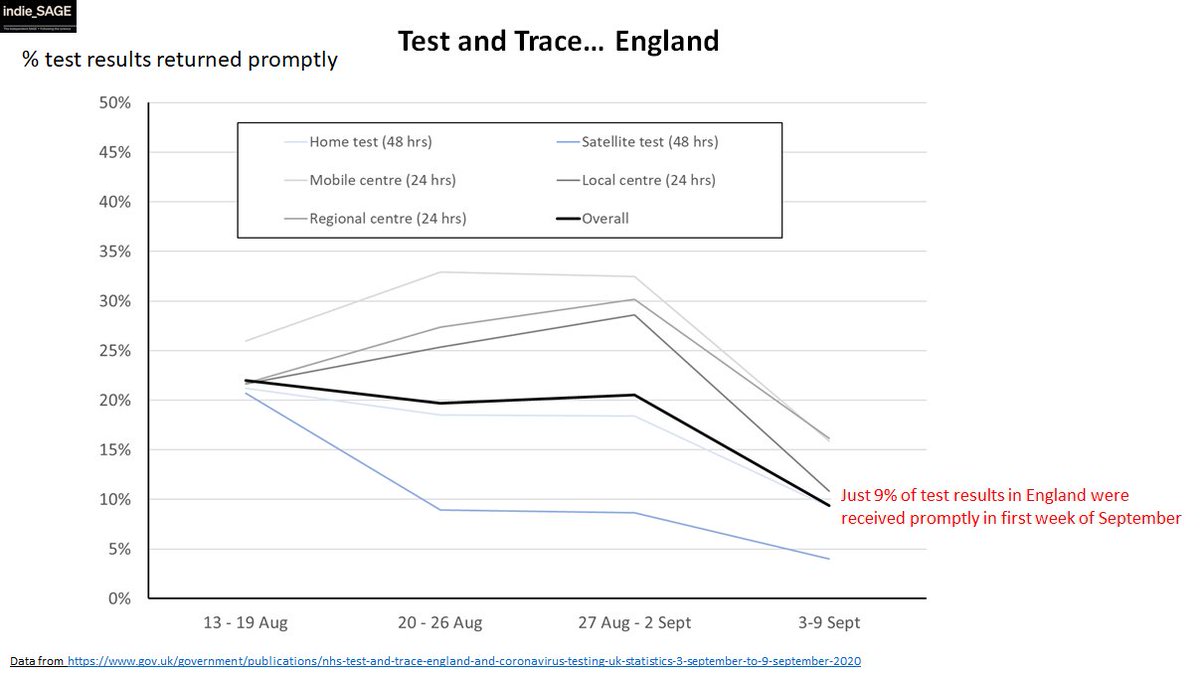
So we have to take recent case data with a pinch of salt - we know that many aren't getting tests. We know that there are big backlogs. We don't know exactly who is getting tested. But *even so* cases are climbing rapidly. 3/13 

However, estimates of infection not affected by testing also show rapid increase. Importantly both the Covid symptom tracker app & @ONS infection survey show 8 day doubling - matching that seen in the imperial REACT study. Slower than March but still too fast. 4/13 
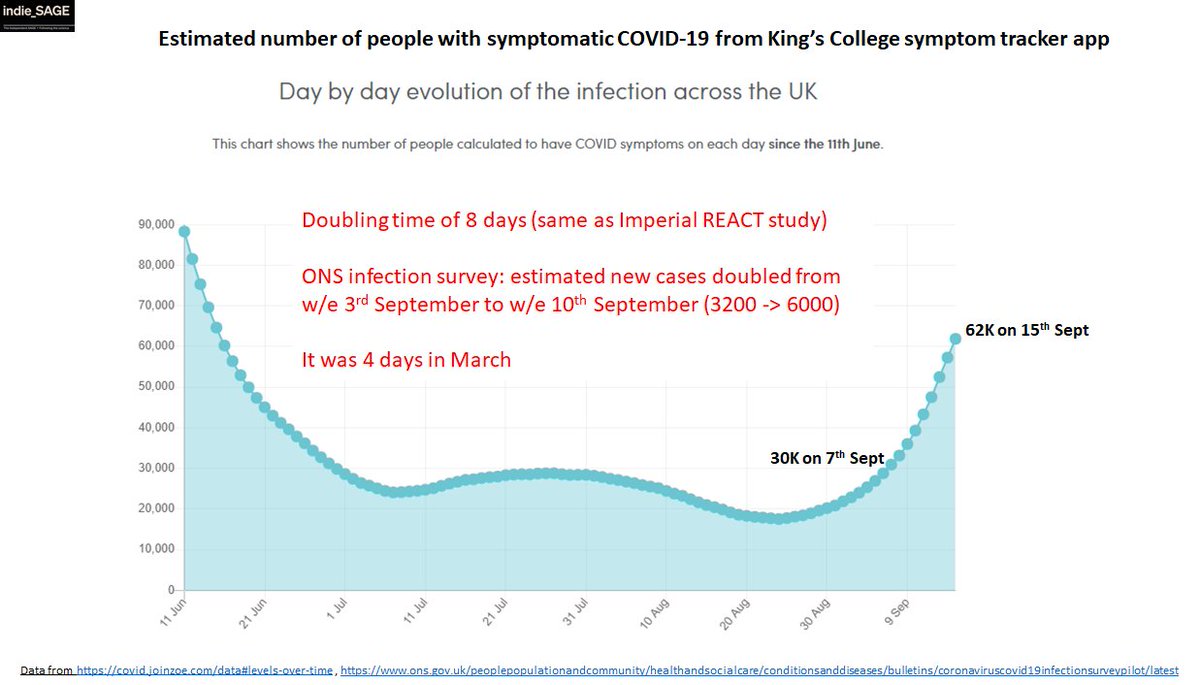
These maps from @TravellingTabby show how COVID has spread across the country - there are many hotspots and most places are warm and getting warmer. Places that were hard hit the first time are not being spared (e.g. Birmingham). 5/13 
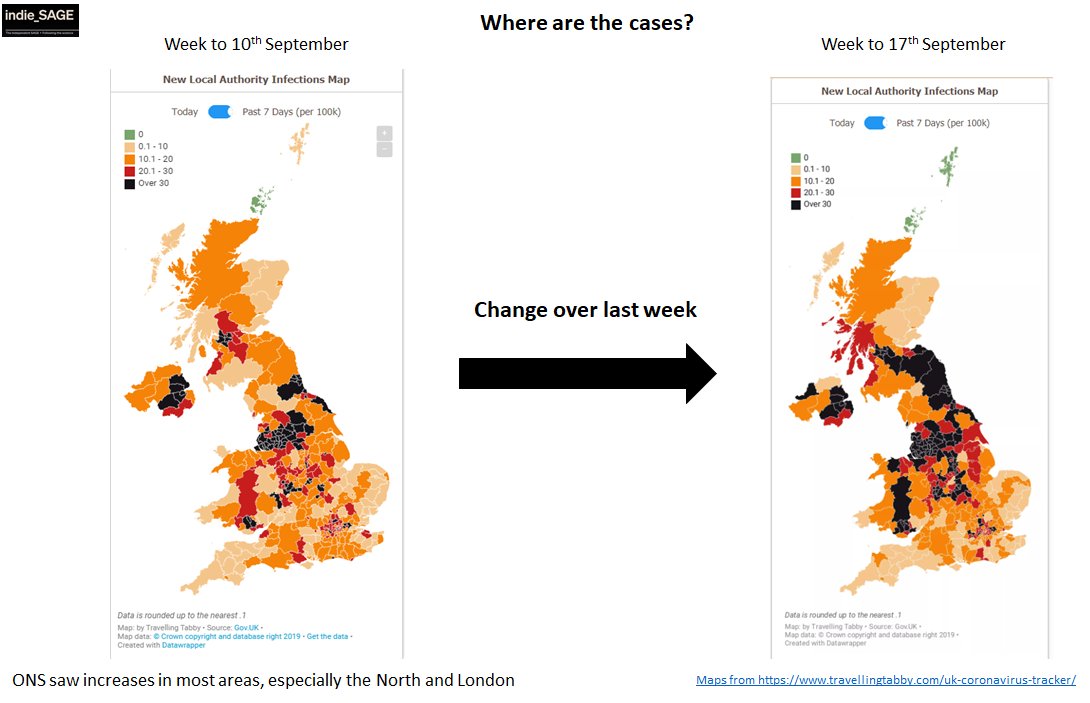
It's also spreading to more age groups. This data from @PHE_uk shows few cases through July, increasing in young adults throughout August and then spreading to younger and older age groups in September. Note that final week might be affected by testing issues. 6/13 
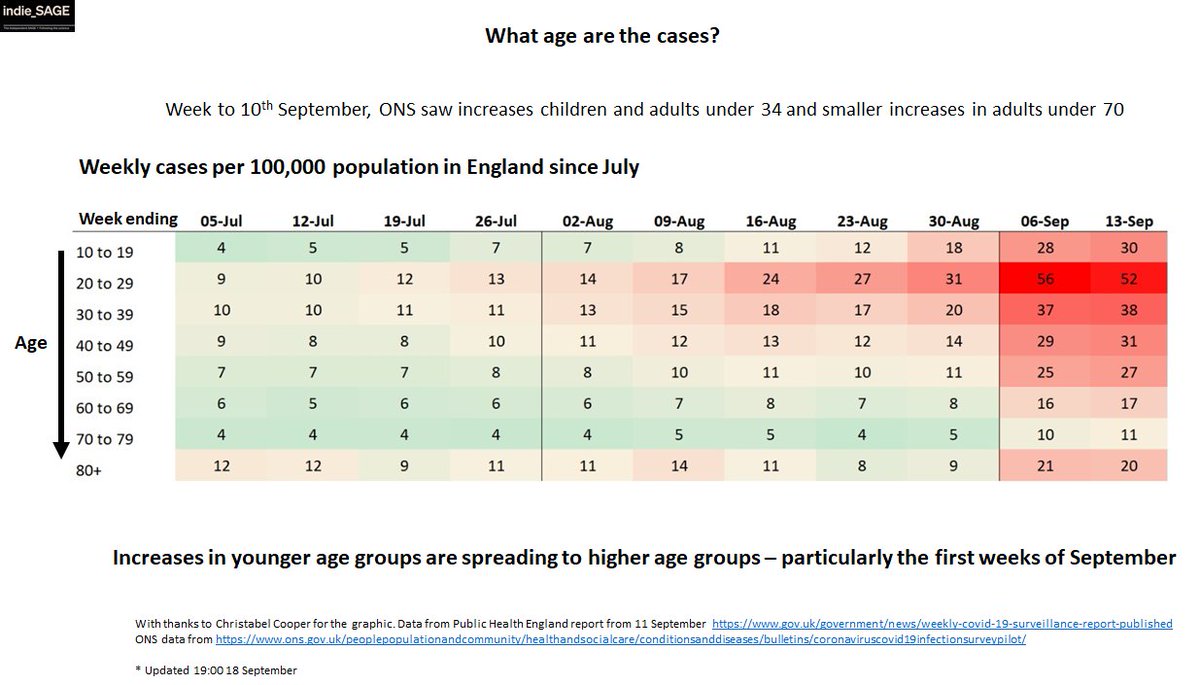
Unsurprisingly, the spread to older people has led to a corresponding rapid increase in hospital admissions from early September - e.g. median age in University Hospital Birmingham is about 50. Doubling time is *again* 8 days. 7/13 
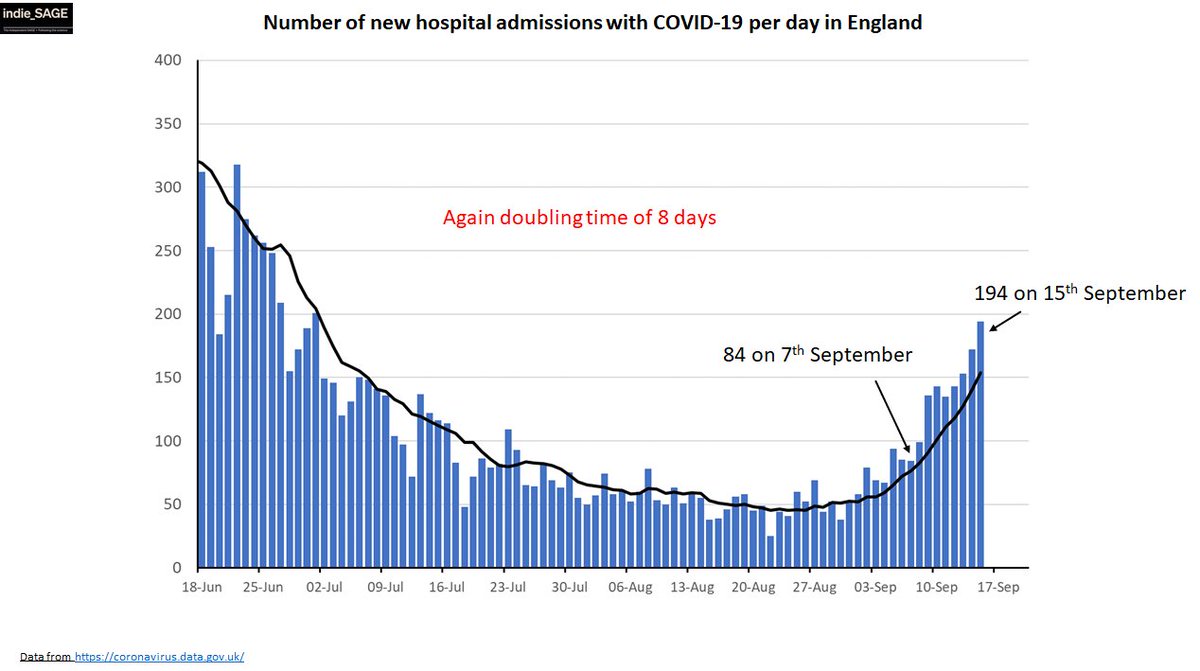
Fitting an exponential growth curve with 8-day doubling to admissions from 4 September is v worrying - we'll be at 18th March admission numbers by *next weeked* and lockdown admission numbers by early October. Hopefully recent restrictions & hot weather has slowed spread... 8/13 
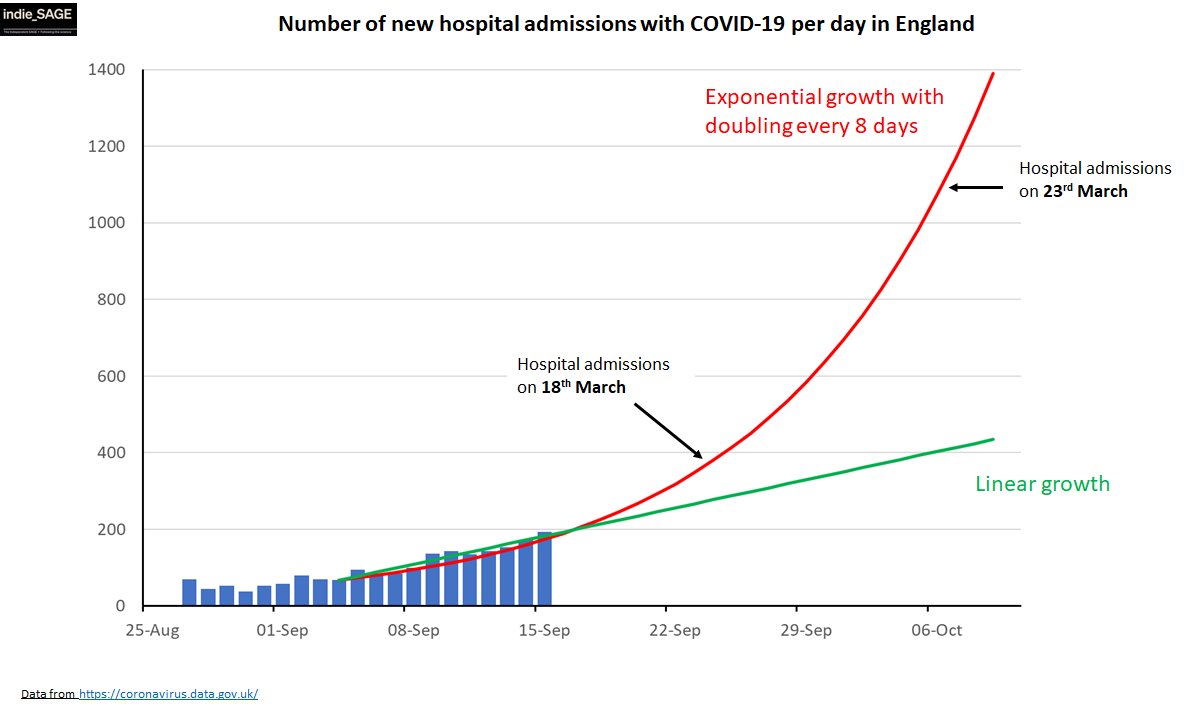
UCL Prof Friston's modelling says we are at a knife edge - if we improve test & trace in next 2 weeks we can bend curve down. If we wait 6-8 weeks, it's too late. We don't need to be perfect - just a *bit* better will help! you *can* contact trace based on symptoms not tests 9/13 
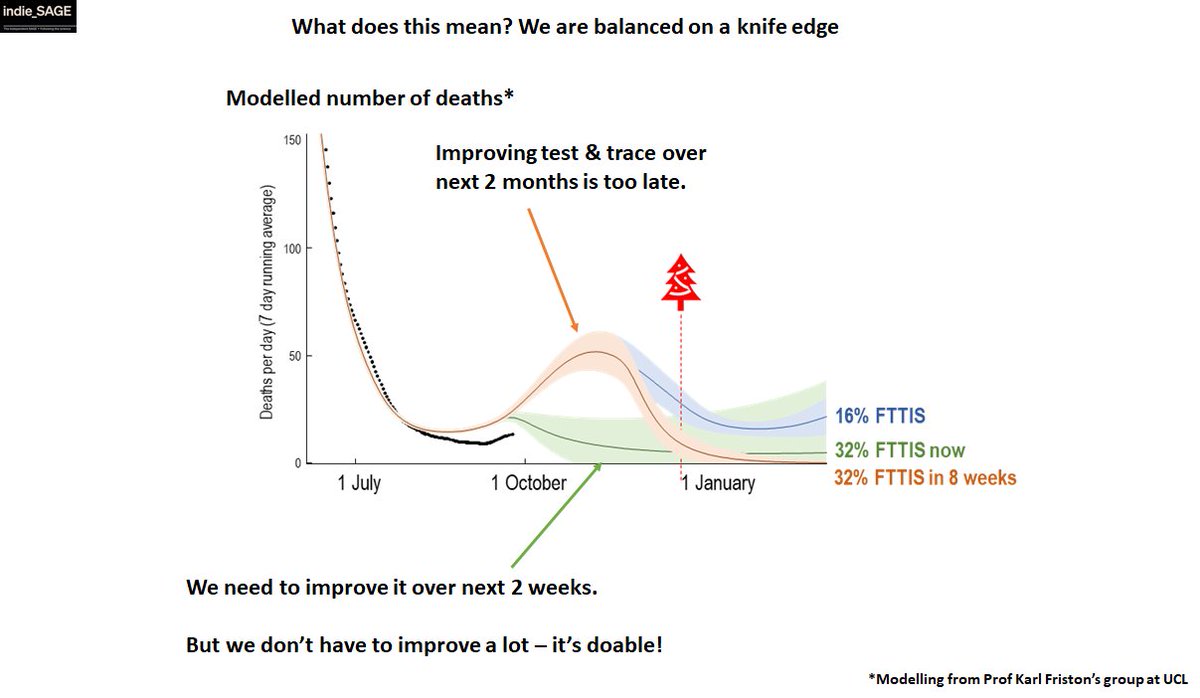
So - we have steep increase in cases, increased spread across the country & age groups, increased hospital & ICU admissions & a broken testing system. There's no sugar coating it - we're in a dangerous place. (NOT inevitable by the way, no matter what Boris says!). 11/13
We need to act *now* before we can't avert the crisis any longer. @IndependentSage proposes a 10 point plan for consultation. We spoke a while ago about the possibility of needing to choose between pubs and schools. We think that time has now come - choose schools. 12/13 

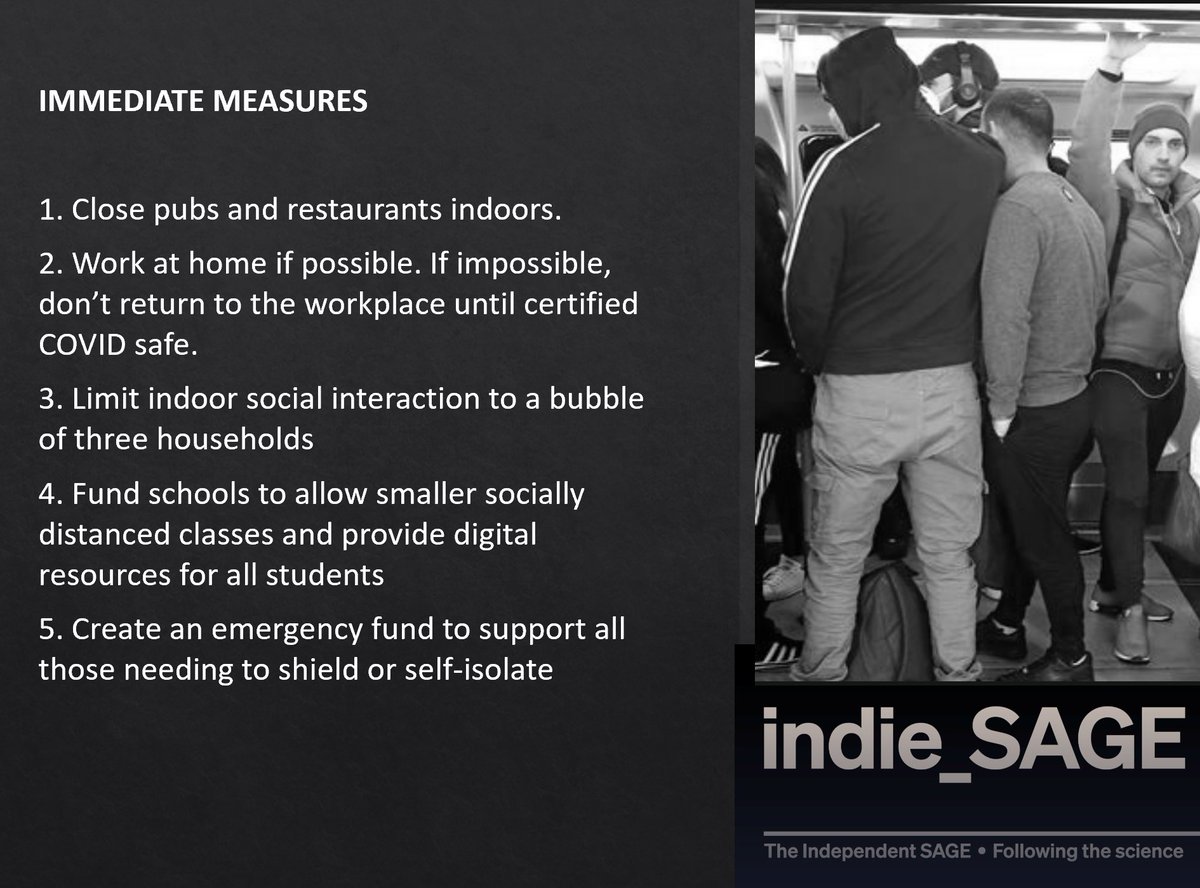
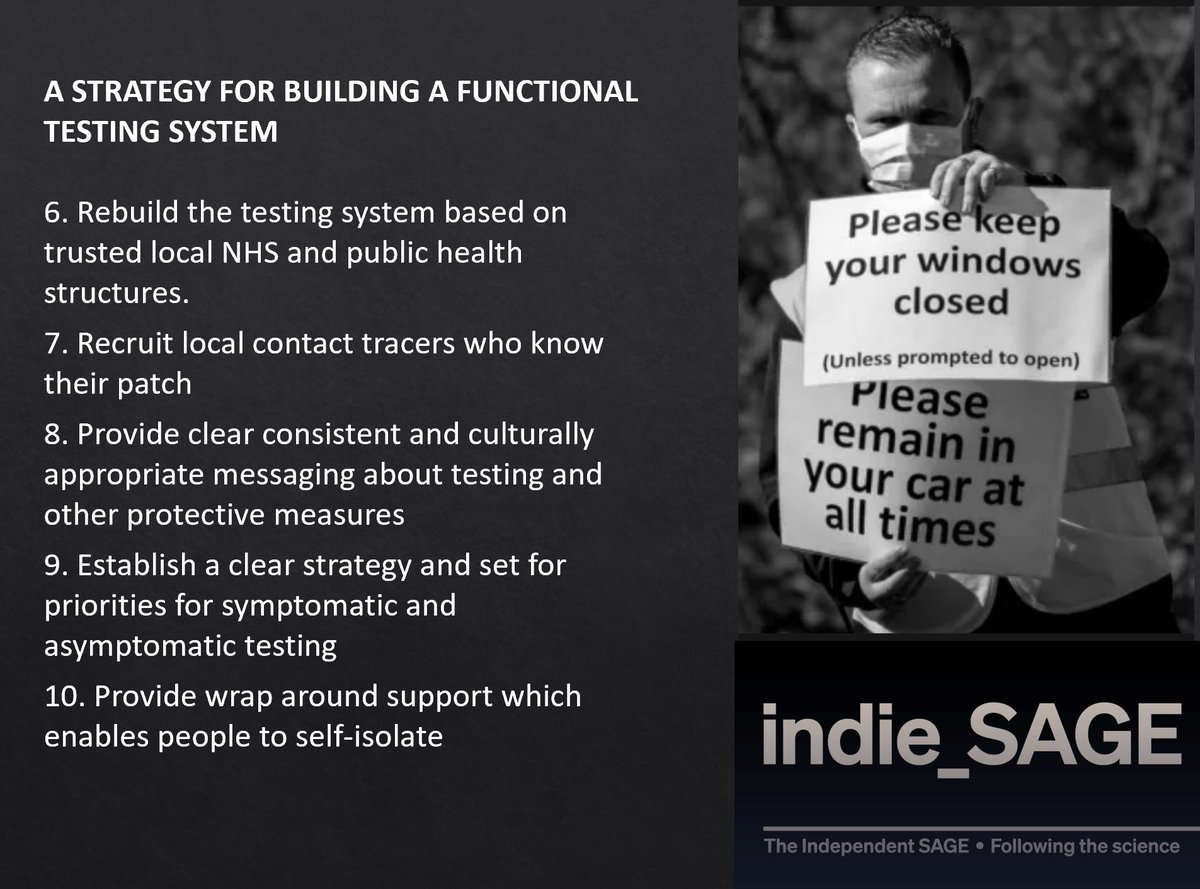
Finally, where is the gvmnt? We hear rumours of national lockdowns; new restrictions are announced late at night. We need daily press briefings again. We don't need gloss - we need honesty, ownership of mistakes and a plan for tomorrow, next week, next month and next year. 13/13
• • •
Missing some Tweet in this thread? You can try to
force a refresh

